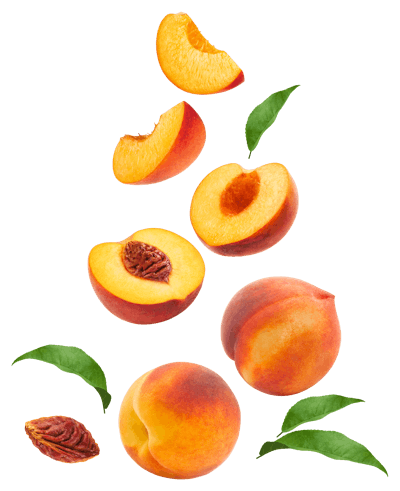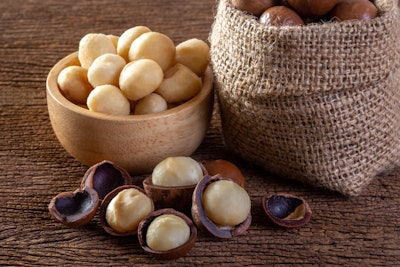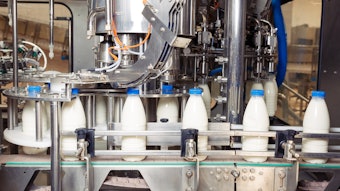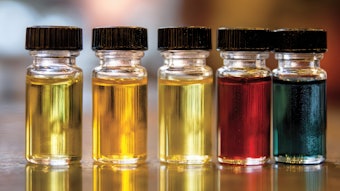
Methyl benzoate (FEMA #2683, CAS #93-58-3) has an attractive combination of a dominant, deep berry note and a subtle hint of balsam. It conveys an impression of depth rather than freshness and can help to reinforce the base of most berry flavors. Quite aside from the berry category it can also be an interesting contributor to a diverse range of other flavors.
This article is only available to registered users.
Log In to View the Full Article
Methyl benzoate (FEMA #2683, CAS #93-58-3) has an attractive combination of a dominant, deep berry note and a subtle hint of balsam. It conveys an impression of depth rather than freshness and can help to reinforce the base of most berry flavors. Quite aside from the berry category it can also be an interesting contributor to a diverse range of other flavors.
Note that the dose rates given throughout this article are the levels suggested for use in flavors intended to be dosed at 0.05% in ready-to-drink beverages or in a simple bouillon.
Berry Flavors
Blackberry: Methyl benzoate provides a good background note in blackberry flavors. Fifty ppm is a good level of addition.
Blackcurrant: The same is true for realistic blackcurrant flavors. The level is also similar, 40 ppm. More fantasy, buchu-based flavors can accommodate up to 100 ppm.
Blueberry: Blueberry flavors need a counterbalance to the bright, floral notes. Methyl benzoate works well at 100 ppm.
Cloudberry: One hundred ppm of methyl benzoate is just a starting point in Nordic cloudberry flavors. Levels can go up to 500 ppm in heavier flavors.
Cranberry, Fresh: This ingredient blends very effectively with 2-methyl butyric acid at levels of addition between 100 and 200 ppm.
Lingonberry: Lingonberry flavors, like cloudberry flavors, can make good use of methyl benzoate at levels as high as 500 ppm.
Loganberry and Raspberry: Both flavors gain depth from between 30 and 50 ppm of this raw material.
Strawberry: Methyl benzoate is not an obvious ingredient in strawberry flavors, but it does modify methyl cinnamate helpfully when added at 40 ppm.
Other Fruit Flavors
Apricot and Peach: Methyl benzoate at a modest level, 30 to 50 ppm, moderates the Methyl benzoate can be added to apricot and peach flavors at modest levels. Denis Petrovskikh at Adobe Stock
Methyl benzoate can be added to apricot and peach flavors at modest levels. Denis Petrovskikh at Adobe Stock
Cherry: In contrast, cherry flavors can use this ingredient at much higher levels to pair with benzaldehyde. One thousand ppm works well in flavors dominated by benzaldehyde.
Grape, Concord: This raw material fits very well into the background character of Concord grape flavors at levels ranging from 50 to 100 ppm.
Grapefruit, Lemon and Orange: This is a tricky ingredient for citrus flavors. At most levels of addition it adds an intrusive note, but at very low levels, around 5 ppm, it has an interesting and authentic effect.
Guava: The best level for methyl benzoate in guava flavors can vary, mainly depending on the level of methyl cinnamate. Two hundred ppm is a cautious starting point.
Kiwi: Methyl benzoate is very much in the background of kiwi flavors, but 10 ppm can add subtle depth.
Papaya: Papaya flavors benefit from a modest addition of this raw material. Forty ppm works well.
Plum: Plum flavors benefit from a moderate addition of methyl benzoate, in the region of 200 ppm.
Starfruit: Methyl benzoate is very important in starfruit flavors, with a major contribution to the profile at 2,000 ppm.
Other Flavors
Asparagus: Asparagus flavors need to counterbalance the obviously volatile sulfur notes. Methyl benzoate is effective at levels ranging from 100 to 200 ppm.
Bacon: Methyl benzoate only makes a modest contribution to brown and savory flavors, but it is nevertheless helpful to round out the profiles and add authenticity. Bacon flavors can make good use of 10 ppm.
Chocolate and Cocoa: The same profile smoothing effect at low levels of addition applies to both chocolate and cocoa flavors. The ideal level is also 10 ppm.
Coffee: Coffee flavors also fit into this general brown flavor category. Ten to 20 ppm is a good range of addition.
Hazelnut: Ten to 20 ppm also works well in hazelnut flavors. Methyl benzoate is an interesting minor addition to all nut flavors.
Honey: Honey flavors vary considerably, but methyl benzoate has a place in all of them because it blends so well with 2-phenyl acetic acid. Five hundred ppm is a good place to start.
Jasmine: Benzyl acetate is a very effective fruity note in jasmine flavors and can be added at quite high levels, assisted by methyl benzoate to smooth the impact. One hundred ppm is a good level.
 Macademia nut flavors are fairly assertive and can make good use of slightly higher levels of methyl benzoate.Chaded at Adobe Stock
Macademia nut flavors are fairly assertive and can make good use of slightly higher levels of methyl benzoate.Chaded at Adobe Stock
Macademia Nut: Macademia nut flavors are fairly assertive and can make good use of slightly higher levels of methyl benzoate, around 30 ppm.
Olive: Methyl benzoate adds useful complexity and authenticity to olive flavors at 10 ppm.
Peanut: Peanut flavors can vary in respect of the level of roasted character and, in consequence, ideal levels of methyl benzoate range from 10 to 30 ppm.
Pistachio and Almond: The ideal level of addition in these two categories of nut flavors is very low, 10 ppm and below.
Tamarind: Methyl benzoate blends harmoniously into all tamarind flavors. High levels can be used but tend to result in a flavor that is too heavy. One hundred ppm is a good compromise.
Walnut: In the nut flavor family, methyl benzoate is probably most compatible with walnut flavors. Ideal levels range from 30 to 50 ppm.










